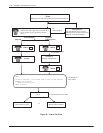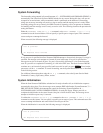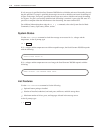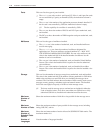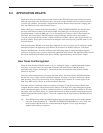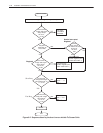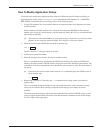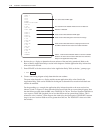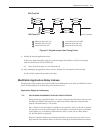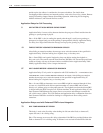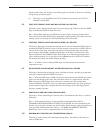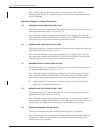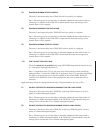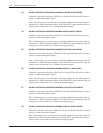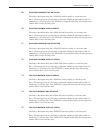
6-46
Installation and Maintenance
Volume
Octel Overture 200/300 Serenade 3.0
PB60014–01
@PRT 1
IN–2
IN–2
IN–0
FLASH
EXPECT DIAL TONE
420 MS
T ON
600 MS
DIAL TONE
DIAL–2
DIAL–2
DIAL–0
2620 MS
T ON
1000 MS
T OFF
2880 MS
T ON
980 MS
T OFF
2920 MS
T ON
790 MS
ANSWER
The
Octel Overture 200/300
monitors
tones for dial tone.
The caller enters DTMF digits.
Octel Overture 200/300
dials
DTMF digits.
Octel Overture 200/300
ignores
the first tone change.
Octel Overture 200/300 monitors call progress tones from
the
PBX
to
determine the status of the called extension.
Failure:
Octel
Overture 200/300
detects
an answer
condition
because
one of the tones from the
PBX
does
not conform to
delays in the Application Delay T
able.
Dial tone is detected.
6. Review
the
PRT
display to determine the tone cadence of the tone being monitored. Refer to the
How to Modify Application Delays section in this chapter to find the application-delay indexes that
refer to the error received.
7.
Enter UPDA
TE to list the current values in the Application Delay T
able; at the dot (.) prompt, type
L APP
Enter
8.
Create a tone timing diagram to help determine the tone cadence.
The tone values from the
PRT
display and the current application-delay values listed in the
Application Delay T
able can be included in the diagram to determine how much an individual tone
needs to be modified.
For the preceding
PRT
example, the application-delay indexes that refer to the error received are
indexes 50 and 54. Figure 6-3 shows what the failure would look like on a tone timing diagram. Note
that the failure occurred when the PBX sent a T
ONE ON for 790 ms. The Octel Overture 200/300 was
set to expect a T
ONE ON (ringback) for no less then 800 ms and no greater than 1200 ms. This is
referred to as the “window
.” In the diagram, the window for the silence period (TONE OFF) between
rings is set to no less than 2800 ms and no greater than 3400 ms. The T
ONE OFF values are within
that window
.



